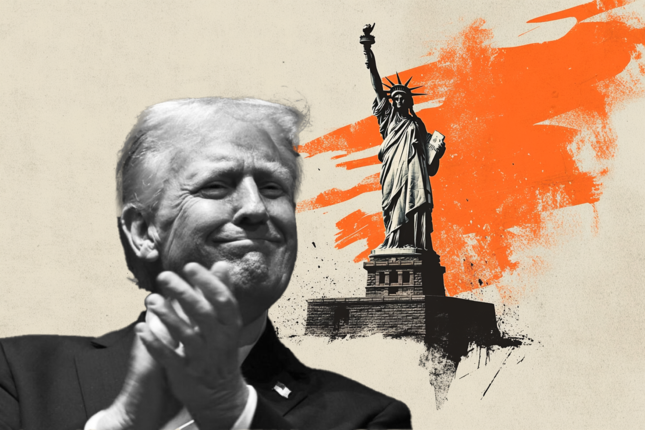The move away from the Federal Reserve Note as the global reserve currency of choice has continued in recent years, with fresh developments increasing the greenback’s stiff competition.
This has led to massive central bank buying of gold, and that trend appears set to continue in 2021. According to a recent report from the World Gold Council, 21% of global central banks plan to purchase gold this year.
Why Do Central Banks Keep Buying?
There are a variety of reasons for central banks to buy and hold gold.
The yellow metal’s reputation as a portfolio diversifier and its role as a safe-haven asset are well known and discussed.
But gold’s ability to improve risk-adjusted returns while also serving as an important form of collateral are less talked about topics that may be just as important.
The World Gold Council’s survey also indicated that no central bank has plans to sell its gold reserves this year, having fallen from a 4% reading last year.
“This year’s survey continues to highlight significant interest in gold amongst central banks, with the backdrop of the COVID-19 pandemic underscoring the importance of maintaining liquid, uncorrelated assets in a reserve portfolio.
“Inflation has also resurfaced as an investment consideration and may inform central bank asset allocation in the coming years. We believe that central banks will continue to be net buyers of gold, albeit at somewhat lower volumes than those of the previous decade.”
Gold’s strong performance during the Covid-19 epidemic is likely to become the top reason for central bank buying this year.
Here are key reasons why global monetary planners are accumulating gold:
- Gold is a great diversifier. It is uncorrelated to stocks or bonds and can add much needed portfolio diversification to a portfolio while also providing credibility.
- Gold is reliable and trusted. Gold has been a reliable store of wealth and protector of value for centuries – and that reputation is unlikely to change anytime soon. Adding gold can lend credibility to a central bank and its currency.
- Gold is an inflation fighter. With inflation now clearly on the rise, it is more important than ever to own assets that may outperform as prices rise. With the Federal Reserve and other global central banks holding rates at or near zero while printing money each month, the need for an inflationary hedge has never been more pressing.
- Gold has zero counterparty risk. The gold market is global, and the metal carries zero counterparty risk. It cannot go bankrupt, default, or otherwise screw its owners. Gold is recognized and valued all over the globe and is always accepted as payment.
- Gold can be used for interventions. Gold is the ultimate currency, and having a gold holding as part of central bank reserves provides central planners a powerful tool to intervene in the markets for whatever purposes.
The key takeaway: If gold is being accumulated by the largest, most powerful financial institutions on Earth, shouldn’t you do so also?
Money Metals Exchange and its staff do not act as personal investment advisors for any specific individual. Nor do we advocate the purchase or sale of any regulated security listed on any exchange for any specific individual. Readers and customers should be aware that, although our track record is excellent, investment markets have inherent risks and there can be no guarantee of future profits. Likewise, our past performance does not assure the same future. You are responsible for your investment decisions, and they should be made in consultation with your own advisors. By purchasing through Money Metals, you understand our company not responsible for any losses caused by your investment decisions, nor do we have any claim to any market gains you may enjoy. This Website is provided “as is,” and Money Metals disclaims all warranties (express or implied) and any and all responsibility or liability for the accuracy, legality, reliability, or availability of any content on the Website.
Recommended Content
Editors’ Picks

EUR/USD advances to multi-day highs around 1.0860
EUR/USD is surging ahead, rapidly recovering and approaching multi-day highs around 1.0860. This boost comes on the heels of news that the EU might roll out countermeasures to soften the blow of Trump’s impending reciprocal tariffs.

GBP/USD flirts with tops near 1.2970 ahead of Trump's tariffs
GBP/USD is accelerating, challenging weekly highs near 1.2970 as a renewed, sharp drop in the Greenback sets the stage for the US 'reciprocal tariffs' announcement on "Liberation Day" at 20:00 GMT.

Gold looks consolidative near $3,120 ahead of Trump's “Liberation Day”
Gold is regaining momentum, climbing above $3,120 after a slight pullback from Tuesday’s near-record high of $3,150. Retreating US yields are bolstering XAU/USD, ahead of President Trump's official announcement of the reciprocal tariff measures later this Wednesday.

Trump Tariffs: Everything you need to know on “Liberation Day” Premium
The global trading system is about to be upended, but to what extent? Will markets have clarity or is it merely another phase in ongoing trade wars? Some answers are due on Wednesday at 20:00 GMT. Here is preview of the five critical things to watch.

Is the US economy headed for a recession?
Leading economists say a recession is more likely than originally expected. With new tariffs set to be launched on April 2, investors and economists are growing more concerned about an economic slowdown or recession.

The Best brokers to trade EUR/USD
SPONSORED Discover the top brokers for trading EUR/USD in 2025. Our list features brokers with competitive spreads, fast execution, and powerful platforms. Whether you're a beginner or an expert, find the right partner to navigate the dynamic Forex market.